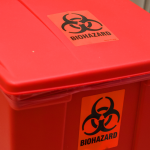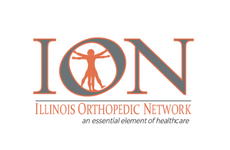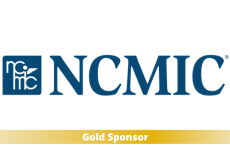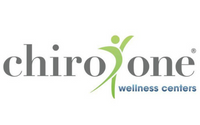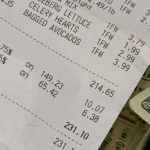
ICD 10 Changes October 1, 2025

The official ICD-10 updates for Fiscal Year 2026 go into effect October 1, 2025. The update contains 487 new, 28 deleted, and 38 revised ICD-10-CM diagnosis codes. These 2026 ICD-10-CM codes will be used for patient encounters from Oct. 1, 2025, through Sept. 30, 2026.
Only a few changes are relevant to chiropractic, including some symptom codes and codes that describe a patient’s socioeconomic status.
Symptom Codes
Chapter 18 in ICD-10 is for “Symptoms, signs and abnormal clinical and laboratory findings, not elsewhere classified (R00-R99).” The instructions for this chapter tell us that “symptoms and signs, as opposed to diagnoses, are acceptable for reporting purposes when a related definitive diagnosis has not been established (confirmed) by the provider.” (ICD-10-CM Official Guidelines for Coding and Reporting FY 2026, section 1.B.4). Most, but not all, of the codes for symptoms are found in this chapter. If the reported codes only repeat the symptoms for which the patient sought treatment, that would indicate that the provider is unable to identify the cause. This provides a weaker justification for most kinds of treatment.
R10.2 for pelvic and perineal pain was expanded to include five more options that report more location detail. The additions look like this (new codes in bold)
R10.2- Pelvic and perineal pain
- R10.20 Pelvic and perineal pain unspecified side
- R10.21 Pelvic and perineal pain right side
- R10.22 Pelvic and perineal pain left side
- R10.23 Pelvic and perineal pain bilateral
- R10.24 Suprapubic pain
Keep in mind that, as of Oct. 1, 2025, R10.2 is no longer a complete code. A fifth character is required. Claims with the old code, for dates of service prior to 10/1, will be denied. Be sure to update your billing software to reflect this change.
R10.8- for “other abdominal pain” was also expanded. (changes in bold)
- R10.8- Other abdominal pain
- R10.85 Abdominal pain of multiple sites
- Excludes1:
abdominal rigidity NOS (R19.3)
generalized abdominal pain associated with acute abdomen (R10.0)
generalized abdominal pain NOS (R10.84)
localized abdominal pain (R10.1-R10.4-)
- Excludes1:
- R10.8A- Flank tenderness
- R10.8A1 Right flank tenderness
- R10.8A2 Left flank tenderness
- R10.8A3 Suprapubic tenderness
- R10.8A9 Flank tenderness, unspecified
- Flank tenderness NOS
- R10.A- Pain localized to flank
- Lateral abdomen pain
- Lateral flank pain
- Latus region pain
- Excludes2: pain localized to other parts of lower abdomen (R10.3-)
pain localized to upper abdomen (R10.1-)
- Excludes2: pain localized to other parts of lower abdomen (R10.3-)
- R10.A0 Flank pain, unspecified side
- R10.A1 Flank pain, right side
- R10.A2 Flank pain, left side
- R10.A3 Flank pain, bilateral
- R10.85 Abdominal pain of multiple sites
Socioeconomic Circumstance Codes
Chapter 21 includes codes that start with “Z,” and they represent reasons for encounters and factors influencing health status. The section of codes from Z55-Z65 is for “Persons with potential health hazards related to socioeconomic and psychosocial circumstances.” These codes can be used to report “social determinants of health,” which can be a factor that may indicate a moderate level of risk of morbidity, one element of medical decision making in support of a level 4 evaluation and management code. Reporting this additional detail on the claim form may reduce the need for payers to request records.
Inclusion terms, as defined in the ICD-10 guidelines, “may be synonyms of the code title” or “a list of the various conditions assigned to that code.” There are some new codes in the socioeconomic section of chapter 21, and some existing codes that got new inclusion terms, which are depicted below, in bold.
- Z56.6 Other physical and mental strain related to work
- Workplace stress
- Z56.89 Other problems related to employment
- Furloughed
- Underemployed
- Z59.02 Unsheltered homelessness
- Lives in a homeless encampment
- Z59.19 Other inadequate housing
- Poor housing weatherization
- Z59.86 Financial insecurity
- Z59.861 Financial insecurity, difficulty paying for utilities
- Difficulty paying for electricity
- Difficulty paying for heat
- Difficulty paying for oil
- Difficulty paying water bill
- Utility disconnect notice due to inability to pay
- Excludes2: inadequate housing utilities (Z59.12)
- Z59.868 Other specified financial insecurity
- Bankruptcy
- Z59.869 Financial insecurity, unspecified
Keep in mind that there are many other Z codes that include other details that may be helpful to report along with a condition. These are just some of the changes for 2026.
ICD-10 Tips
- Excludes1 – The new code R10.85 Abdominal pain of multiple sites has several listings under the Excludes1. This means that it can’t be used if the listed excluded codes are used, and vice versa. They are mutually exclusive.
- Excludes2 – The new code Z59.861 Financial insecurity, difficulty paying for utilities has one code listed under Excludes2. This indicates that Z59.12 inadequate housing utilities is not included in Z59.861 and could be coded in addition.
- NOS – this abbreviation, found in many code descriptions, means “not otherwise specified,” and is synonymous with “unspecified.” It indicates that the code was chosen because the documentation does not specify detail enough to choose one of the other, more specific, codes. In many cases, unspecified codes should be a last resort, as it could indicate that the documentation is lacking.
- If you do not yet use diagnosis pointing when filling out box 24E on the CMS-1500 claim form, you might be getting denials that are easily avoidable. See also “Diagnosis Coding Mistakes That Delay Payments.” For members of the Illinois Chiropractic Society, you can also ask Paxson, the ICS closed system AI chatbot, for customized guidance.
There were many other changes to the code set for 2026, but these are the ones most likely to be relevant to chiropractic physicians and physical medicine providers. To see the complete list of changes, go to CMS.gov.




